
by Tom Barrett | May 13, 2021
“H20: The Molecule that Made Us” Documents the Human Relationship to Water
An amazing three-part PBS series which first aired in April of 2020 is now available for streaming. “H2O: The Molecule that Made Us” chronicles the human story through our relationship to water.
The three segments dramatically reveal how humankind’s affiliation with this simple molecule underpins every aspect of our existence. Here’s a clip of the series overview:
Note: Full episodes of this series are only available to stream through PBS Passport. (See box, below right.)
Episode 1: Pulse
The first episode explores the ways in which water has become the essential force behind all life.
What Is a PBS Passport?
PBS Passport is a member benefit for PBS donors, providing extended access to an on-demand library of public television programming.
Members who contribute annual gifts of $60 or more are eligible for the Passport benefit.
To learn more, visit the PBS Passport website.
H20 has been at the heart of the human story since the very beginning, and this first segment illustrates why we as a species can no longer take water for granted.
Episode 2: Civilizations
The second episode reveals how our success as a species is intimately connected to our control of water.
However, with the establishment and growth of our various civilizations we have created a dangerous dependence on this precious resource.
Episode 3: Crisis
The final segment of this landmark series explores how Earth’s changing water cycle is reshaping everything. Water is being mined faster than it can be replaced, as the global agricultural industry converts the planet’s precious reserves into profit.
This episode also examines the deep roots that connect water security with various conflicts around the world. If we want to understand why our world is changing, we need only follow the water.
Sources:
Featured Image: Pixabay
PBS

by Tom Barrett | Jul 10, 2019
Results Are in for Two-Year
Water Efficiency Study
Outdoor water efficiency programs work.
That’s the conclusion reached by the Alliance for Water Efficiency (AWE) following its two-year Landscape Transformation study. The AWE researched 14 different community-driven programs from across the country. In the final analysis, the AWE determined that these programs reduced outdoor water usage by 7 to 39 percent for program participants.
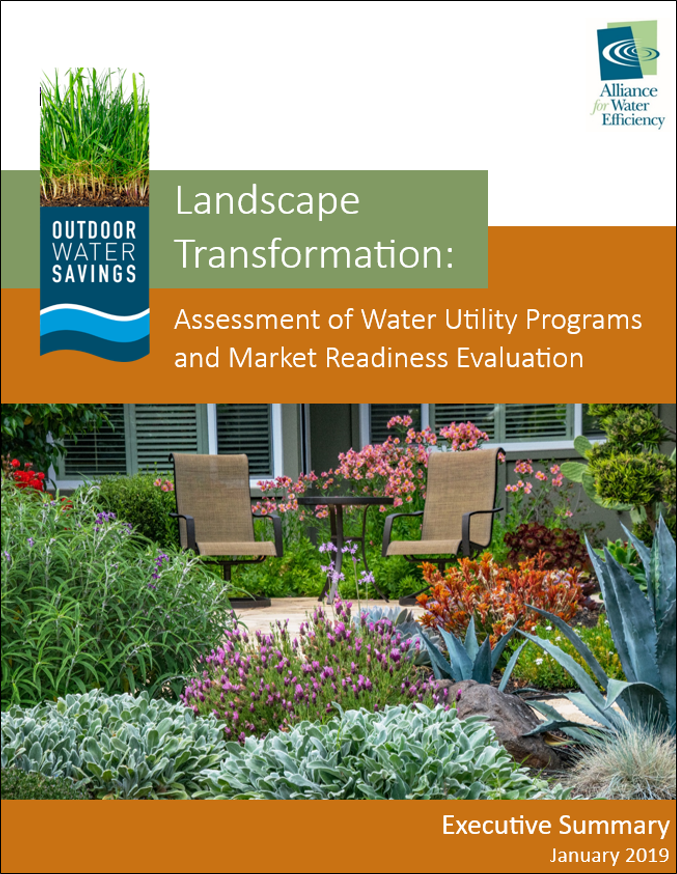 The water efficiency programs studied included incentives for efficient irrigation technologies, free distribution of mulch, turf removal and water-wise re-landscaping, and customer site audits. Water savings were achieved in every community, regardless of the climate, program type or incentives for participation. (To download the Landscape Transformation Executive Summary, click here.)
The water efficiency programs studied included incentives for efficient irrigation technologies, free distribution of mulch, turf removal and water-wise re-landscaping, and customer site audits. Water savings were achieved in every community, regardless of the climate, program type or incentives for participation. (To download the Landscape Transformation Executive Summary, click here.)
According to the EPA, nearly nine billion gallons of water are used each day outdoors, mainly for landscape irrigation. In addition, as much as 50 percent of water used outdoors is wasted due to evaporation, inefficient or broken equipment, and overwatering.
AWE President and CEO Mary Ann Dickinson sees this as an opportunity:
“There are still significant water savings to be found by changing the way we look at our lawns. As communities consider their long-term supply options, they should look at landscape transformation programs to help their water utility avoid more costly infrastructure-based solutions.”
Survey Says…
In addition to the impact analysis of water utility programs, the AWE’s study also surveyed 3,000 North American homeowners to determine their interest in landscape transformation.
They found that homeowners typically misjudge the amount of water they use outdoors. More than half of those surveyed believe they use 10 to 30 percent of their overall water outdoors. But most homeowners in fact use 30 to 60 percent of their water outdoors, depending on the region and climate. (According to the EPA’s WaterSense program, the average American household uses more than 300 gallons of water per day.)
The AWE’s survey also revealed that most homeowners believe they are already efficient users of outdoor water. For instance, 41 percent stated that they already owned water-efficient sprinklers. However, industry manufacturers report that less than 20 percent of sprinkler head sales are for efficient models.
–Article Continues Below–

Seeking Sustainability
Survey respondents also indicated a growing interest in sustainable landscapes. Low water use was one of the top three selected landscape attributes (42 percent). Most homeowners surveyed are looking for a variety of landscaping features, preferring more trees, shrubs, flowers and entertaining space than lawn.
 Almost 80 percent of respondents were dissatisfied or only somewhat satisfied with their current landscaping, and half believed their lawns are unhealthy or only partially healthy. But 85 percent believe they would need assistance with a landscape makeover; they’re looking to landscapers and irrigation professionals to help them change their landscapes.
Almost 80 percent of respondents were dissatisfied or only somewhat satisfied with their current landscaping, and half believed their lawns are unhealthy or only partially healthy. But 85 percent believe they would need assistance with a landscape makeover; they’re looking to landscapers and irrigation professionals to help them change their landscapes.
The good news is: Survey respondents who had participated in an alternative landscaping program, were overwhelmingly (91 percent) satisfied with their new landscape. So homeowners want to use more sustainable landscaping, but they need help. That’s where irrigation professionals come in.
Advice from WaterSense
When consulting with homeowners about reducing their outdoor water waste, offer the following suggestions from WaterSense:
- Use regionally appropriate, drought-tolerant, or native plants that thrive in your climate.
 Check sprinkler heads for breaks or leaks and make sure water is going where it’s needed.
Check sprinkler heads for breaks or leaks and make sure water is going where it’s needed.
- Test your irrigation system to ensure the zones are programmed correctly.
- Check your irrigation system to look for water efficiency improvements.
- Create an irrigation schedule that makes seasonal adjustments easy.
- Retrofit your irrigation system with new, water-efficient technologies, such as a WaterSense labeled controller, rainfall sensor, or high-efficiency sprinkler nozzles.
Beautiful and Smart
Clearly, homeowners are beginning to realize that they don’t have to sacrifice a beautiful landscape in order to become more sustainable.
AWE’s Dickinson summed it up nicely:
“Beautiful landscapes are a source of pride for homeowners, but [they] also want to be smart water users. Whether it’s installing a more efficient irrigation system, opting for drought-tolerant turf, or re-landscaping with climate-appropriate plants, we need to communicate that a sustainable landscape can be beautiful and water-conscious.”
Sources:
Alliance for Water Efficiency
WaterSense

by Tom Barrett | Aug 8, 2018
The Importance of Grouping Plants
in Hydrozones
Unfortunately, many irrigation systems are set to water all plants in the landscape at the same time and rate.
This approach wastes water.
But by grouping together plants with similar water needs, homeowners can improve their irrigation system’s efficiency, avoiding both overwatering and underwatering. With hydrozoning, the plantings that require less water are situated farther from the water source.
The Hydrozone Plan
When creating hydrozones, you first want to identify the specific water requirements for individual plantings. (Information on water needs can be found through your local extension service.)
Wherever possible, consider replacing high-maintenance plants with native plants that would naturally require less water.

Once water needs of plants are identified, you’ll want to create four categories for watering: Routine Irrigation, Reduced Irrigation, Limited Irrigation and No Irrigation. When labeling your zones, consider not only types of plants in that area, but also element exposure.
For example, areas that receive direct sunlight will require more water than those located in shade. Similarly, for plantings situated at the top or bottom of a slope, you’ll need to account for runoff and accumulation.
Let’s take a look at each of the four zones.
Zone 1: Routine Irrigation.
This is the area that requires the most water. It’s the highest-maintenance hydrozone, and typically encompasses turf grasses, particularly in high-traffic areas such as playgrounds. (Other areas of your lawn may be zoned differently, and even allowed to go dormant or semi-dormant during dry spells.)
 Early morning is considered the best time to water a lawn, with less chance for evaporation and wind loss. Conversely, try not to water your lawn late in the evening; the grass will stay wet all night, and become more susceptible to disease. When watering a lawn, be sure to wet the soil to a depth of 4 to 6 inches.
Early morning is considered the best time to water a lawn, with less chance for evaporation and wind loss. Conversely, try not to water your lawn late in the evening; the grass will stay wet all night, and become more susceptible to disease. When watering a lawn, be sure to wet the soil to a depth of 4 to 6 inches.
This zone can also include any water-loving trees and shrubs you may have, such as eastern red cedar or elderberry bushes.
Zone 2: Reduced Irrigation
Zone 2 generally includes areas that are used less for activity, such as shrub and flower beds located near the main entrance of a home.
 The amount of water this zone requires depends on the maturity of the plants, amount of direct sunlight received, and depth of mulch.
The amount of water this zone requires depends on the maturity of the plants, amount of direct sunlight received, and depth of mulch.
The soil here should remain somewhat moist, not crumbly dry and not dripping wet. You want to make sure these plants receive enough water to thoroughly replenish the plant’s moisture. (Hint: After watering, the soil should feel like a damp paper towel.)
Zone 3: Limited Irrigation
This is a minimal hydrozone, for areas of your landscape requiring little irrigation. It may include buffer zones between homes, road verges (strips of vegetation between the sidewalk and street) and embankments.
This zone is an ideal location for native plants that will survive primarily on rainfall, with just occasional irrigation to enhance the plants’ health. The Ohio Department of Natural Resources can offer plenty of suggestions.
Zone 4: No Irrigation
The last hydrozone is reserved for areas that require no supplementary water supply. This could include utility areas, mulched parkways, and naturally existing vegetation or xeriscapes.

When hydrozoning, keep in mind the ways in which the various areas are used. Lush “oases” or higher water-use zones are often located closer to the house, while more natural areas with low water needs are placed at the back or edges of the property.
Your hydrozoning plan may take a bit of tweaking and modification, but it will eventually result in an environmentally friendly and thriving landscape.
Sources:
Water Conservation for Lawn and Landscape
Love Your Landscape
The Spruce

by Tom Barrett | Apr 5, 2017
Harvest That Precious Rainwater
With April upon us, we are reminded that every year Mother Nature provides us with trillions of gallons of water. Free of charge. In the form of rainwater.
Last year, for instance, the storms which pummeled the Carolinas dropped enough water to halt California’s five-year drought. And yet, few of us take advantage of learning how to capture this precious resource.
Instead, it flows off lawns into streams, then rivers, then oceans.
A recent article in Irrigation & Green Industry magazine suggests that, when irrigation specialists build cisterns to harvest rainwater, they are providing their customers with “manna from heaven.” But they’re also helping to build the water infrastructure of the future. And providing themselves with an additional revenue source.

New Revenue Stream
Paul Lawrence, president of Texas Land & Water Designs LLC, has been installing rainwater harvesting systems for the past seven years, and he’s a huge proponent of the practice. Lawrence feels that, not only is it a good source of revenue, but startup costs are low for the contractor.
“Licensed irrigators already have many of the skills that are required for rainwater harvesting; it’s a real natural fit for them,” he says.
And it’s not as complicated as it might seem. Virtually every house and commercial building already possesses roofing, gutters and downspouts. The catchment system simply takes the rainwater that now flows down the street and stores it for use at a later date.
The Basic Setup
There are several different options for storing rainwater: above-ground storage tanks, below-ground cisterns, or downspouts directed to bioswales. Smaller systems (such as those that capture less than a hundred gallons) can use rain barrels for storage.
 Whatever option is chosen, a pump may be required to release the water when it’s ready to be used. Most pumps on residential systems are between one-third and one horsepower. That amount of power is sufficient to pressurize the water for either spray or drip irrigation. The pump can be activated manually, or a controller can be used to automate the rainwater flow into the irrigation system.
Whatever option is chosen, a pump may be required to release the water when it’s ready to be used. Most pumps on residential systems are between one-third and one horsepower. That amount of power is sufficient to pressurize the water for either spray or drip irrigation. The pump can be activated manually, or a controller can be used to automate the rainwater flow into the irrigation system.
A couple of important considerations:
- Sanitation should be the first consideration. At the very least, a screen should be placed in the gutter over the downspout. This will keep out large particulate matter, large solids and leaves.
- Storage tanks must be properly sealed against pests and bacteria; otherwise, the water inside can become toxic.
- Every storage tank needs to have an overflow device to prevent backup in heavy-rain situations.
- The overflow device should be fitted with a flapper valve that will close up immediately after excess water has stopped flowing out. This will keep vermin from crawling up the spout.
An Attractive Option
For property owners who find traditional storage units unattractive, more aesthetically-pleasing options are available. For instance, Aquascape, an Illinois-based company, offers its “RainXchange” system, which combines a recirculating, decorative water feature with an underground storage basin.

According to Irrigation & Green Industry magazine, RainXchange offers the same functionality of other storage systems. Specifically, “It makes use of modular storage basins, stackable blocks that are somewhere between milk crates and Legos, which can be arranged in different shapes to fit a variety of application settings. They sit inside a rubber membrane to form a single, water-tight unit underground.”
Contractors can install the RainXchange system under turf grass. An increasingly common option is to install the system beneath a patio made of permeable pavers. According to Ed Beaulieu, director of field research for Aquascape, “This way, the pavers act as a catchment area that prefilters the rainwater before it enters the blocks. It’s very, very efficient.”
The following video demonstrates the installation of a similar underground system by a Texas-based vendor, Innovative Water Solutions:
Closer to home, Rain Brothers, a rainwater-harvesting company based in Columbus, offers system design services throughout Ohio and much of the Midwest.
A simple residential project typically runs between $1,500 and $5,000, depending on a variety of factors, such as size and excavation costs. For instance, if a client’s property doesn’t allow room for heavy equipment, digging by hand will increase the labor time substantially.
Who Are the Target Customers?
According to most irrigation contractors, conservation is the primary motivator when property owners consider installing a rainwater catchment system. Despite the fact that the installation costs them money, these clients are more worried about the long-term consequences of water shortages, pollution and soil erosion.

They may have heard that capturing rainwater is a tried-and-true method of simultaneously controlling runoff and withstanding drought conditions.
“In a residential setting, it’s next to impossible to show an ROI in three to five years,” Lawrence says. “By and large, those clients are doing it for environmental concerns.”
Add It to Your Menu of Services
Rainwater harvesting is a viable permanent addition to the menu of services offered by landscape professionals. As homeowners rediscover this ancient practice of capturing rainwater, contractors will have increasing opportunities to offer their services for installation projects.
 Contractors can easily acquire the skills necessary to get started with catchment system installations. And there is an abundance of resources to ensure your success. The national Irrigation Association offers online classes on the subject, such as “Water Quality of Alternative Water Sources” and “Earning Points for Green Projects.”
Contractors can easily acquire the skills necessary to get started with catchment system installations. And there is an abundance of resources to ensure your success. The national Irrigation Association offers online classes on the subject, such as “Water Quality of Alternative Water Sources” and “Earning Points for Green Projects.”
In addition, the American Rainwater Catchment Systems Association (ARCSA) hosts workshops across the country for those seeking to pass their accredited professional exam. The ARCSA also offers a Resource Guide of rain harvesting designers, educators and suppliers.
Once you’re up to speed on best practices, rainwater harvesting can become a highly profitable source of revenue for your company… and a valuable service for your customers.
Sources:
Irrigation Association
Innovative Water Solutions
American Rainwater Catchment Systems Association


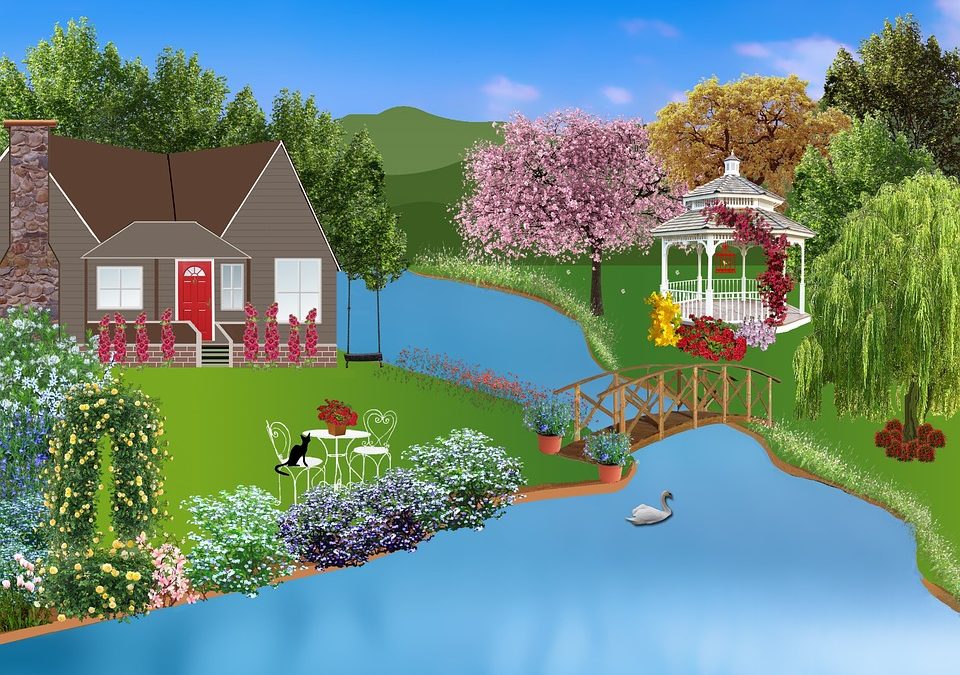
 The water efficiency programs studied included incentives for efficient irrigation technologies, free distribution of mulch, turf removal and water-wise re-landscaping, and customer site audits. Water savings were achieved in every community, regardless of the climate, program type or incentives for participation. (To download the Landscape Transformation Executive Summary,
The water efficiency programs studied included incentives for efficient irrigation technologies, free distribution of mulch, turf removal and water-wise re-landscaping, and customer site audits. Water savings were achieved in every community, regardless of the climate, program type or incentives for participation. (To download the Landscape Transformation Executive Summary, 
 Almost 80 percent of respondents were dissatisfied or only somewhat satisfied with their current landscaping, and half believed their lawns are unhealthy or only partially healthy. But 85 percent believe they would need assistance with a landscape makeover; they’re looking to landscapers and irrigation professionals to help them change their landscapes.
Almost 80 percent of respondents were dissatisfied or only somewhat satisfied with their current landscaping, and half believed their lawns are unhealthy or only partially healthy. But 85 percent believe they would need assistance with a landscape makeover; they’re looking to landscapers and irrigation professionals to help them change their landscapes.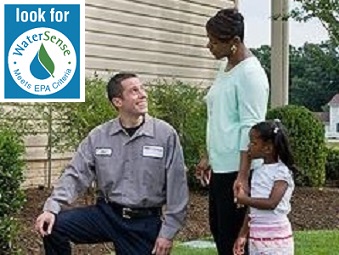 Check sprinkler heads for breaks or leaks and make sure water is going where it’s needed.
Check sprinkler heads for breaks or leaks and make sure water is going where it’s needed.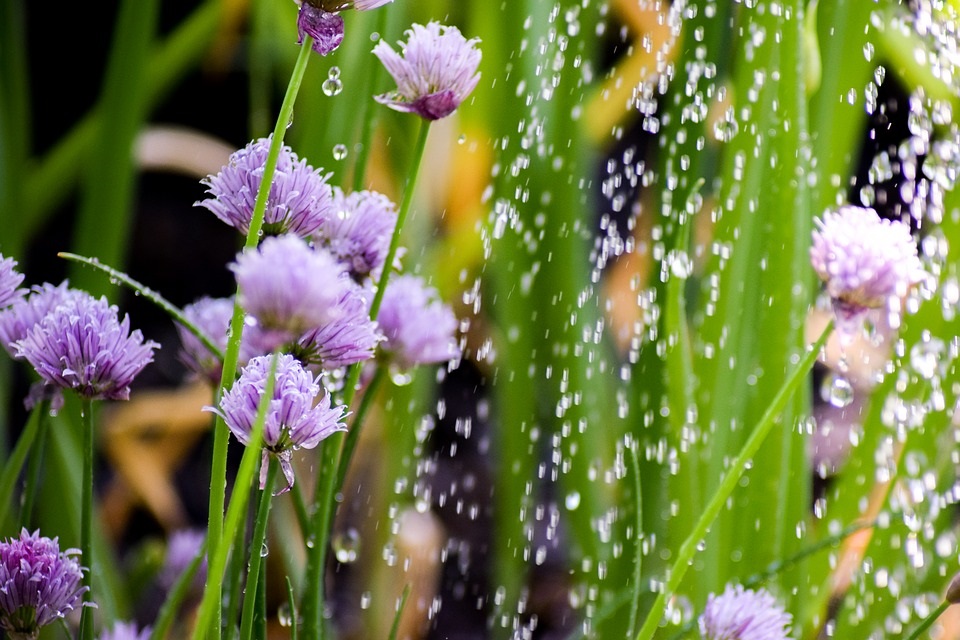

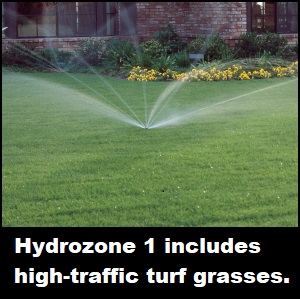 Early morning is considered the best time to water a lawn, with less chance for evaporation and wind loss. Conversely, try not to water your lawn late in the evening; the grass will stay wet all night, and become more susceptible to disease. When watering a lawn, be sure to wet the soil to a depth of 4 to 6 inches.
Early morning is considered the best time to water a lawn, with less chance for evaporation and wind loss. Conversely, try not to water your lawn late in the evening; the grass will stay wet all night, and become more susceptible to disease. When watering a lawn, be sure to wet the soil to a depth of 4 to 6 inches.
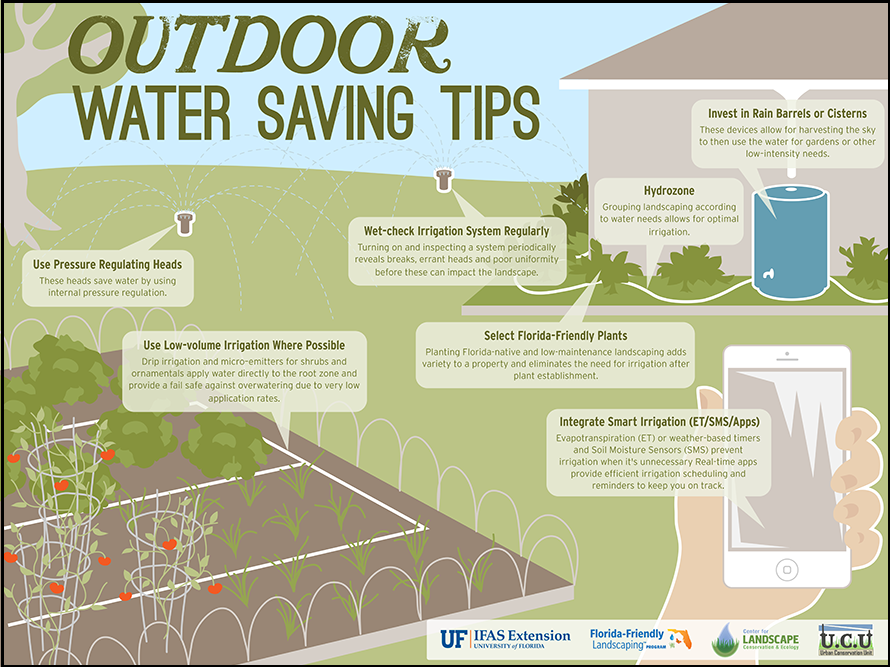
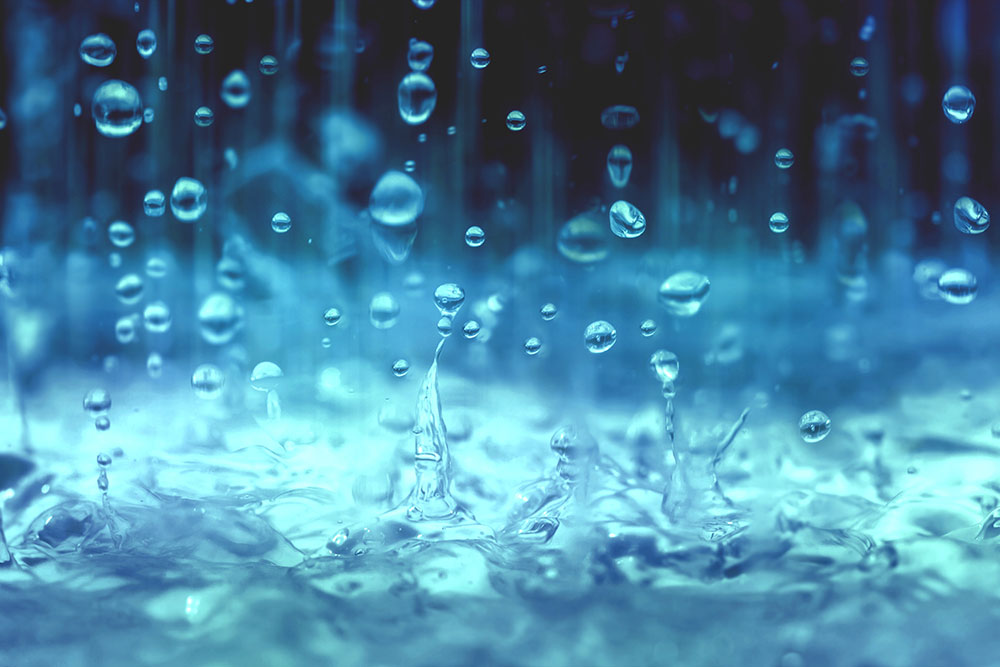
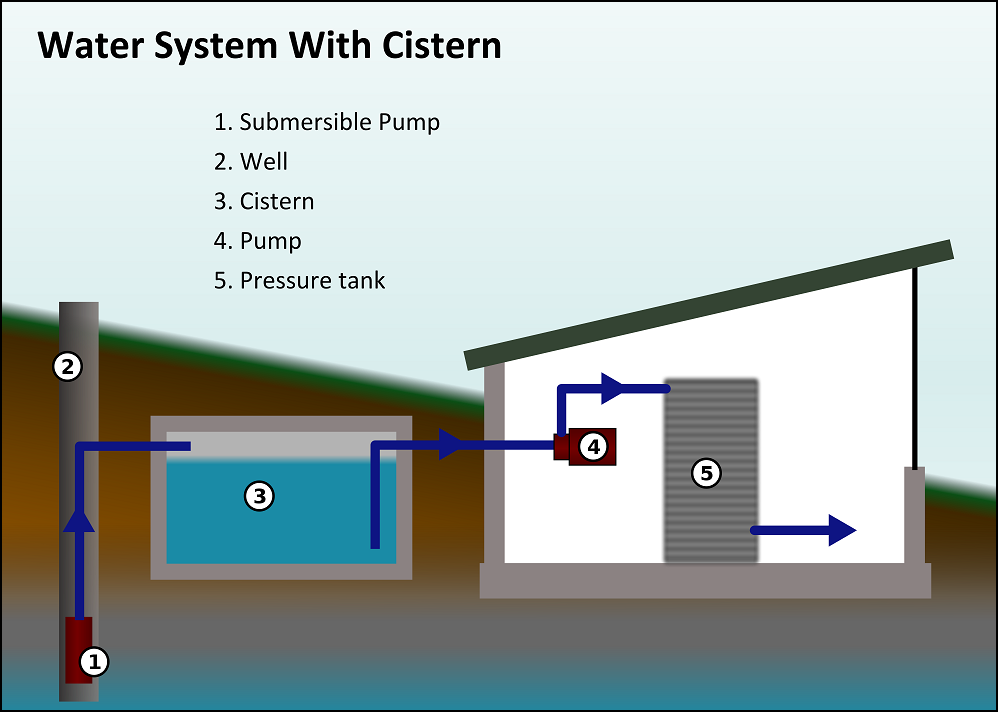
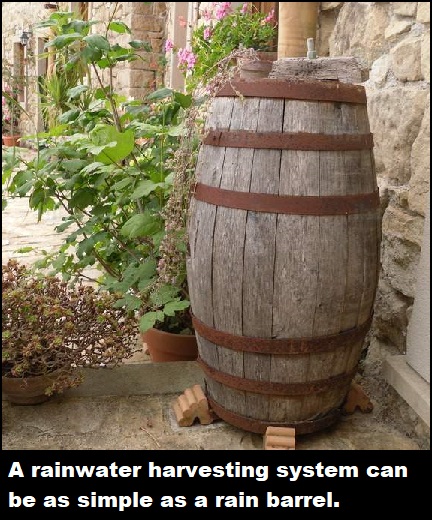 Whatever option is chosen, a pump may be required to release the water when it’s ready to be used. Most pumps on residential systems are between one-third and one horsepower. That amount of power is sufficient to pressurize the water for either spray or drip irrigation. The pump can be activated manually, or a controller can be used to automate the rainwater flow into the irrigation system.
Whatever option is chosen, a pump may be required to release the water when it’s ready to be used. Most pumps on residential systems are between one-third and one horsepower. That amount of power is sufficient to pressurize the water for either spray or drip irrigation. The pump can be activated manually, or a controller can be used to automate the rainwater flow into the irrigation system.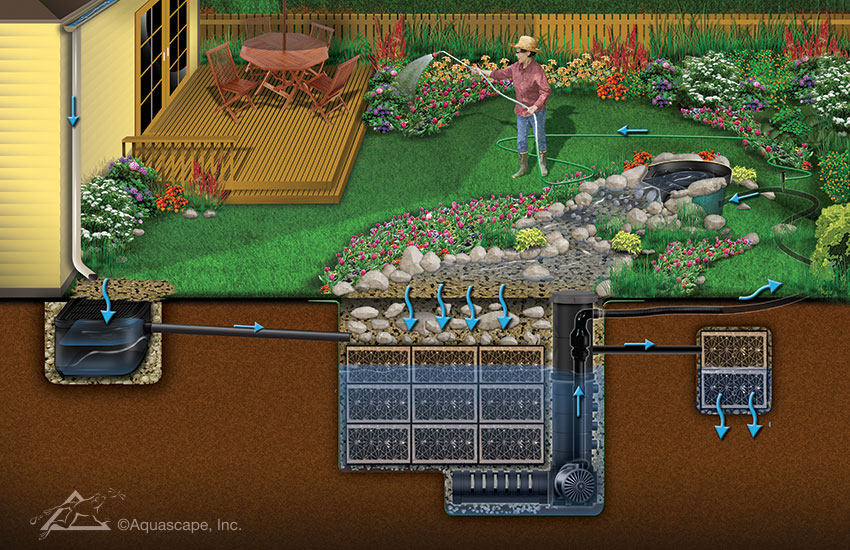

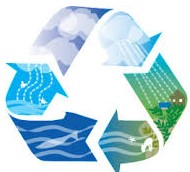 Contractors can easily acquire the skills necessary to get started with catchment system installations. And there is an abundance of resources to ensure your success. The national Irrigation Association offers online classes on the subject, such as “
Contractors can easily acquire the skills necessary to get started with catchment system installations. And there is an abundance of resources to ensure your success. The national Irrigation Association offers online classes on the subject, such as “



